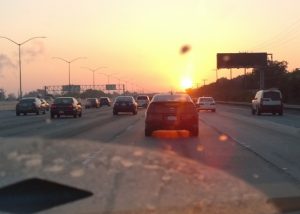In September, in the current “almost post-pandemic” context characterized by the end of most restrictions, the return of holidays and the beginning of the academic year, it is possible to observe a return to normality in mobility, but also new trends that are finally building. , a new post-pandemic normal. Telework is today a very relevant new factor, especially in the Greater Lisbon region. In June, July and early September, 11% of the population was telecommuting but not counting people who were on vacation at that time. We still have to see if this percentage will be maintained in October, as well as the remaining changes, visible today, whether they will be maintained or not.
What PSE, through its Mobility Panel, and considering the information from 6 to 20 September, can indicate about the new mobility, is summarized in the following five points:
- Daily rush hours have returned but are less severe, allowing travel that is on average 17% faster. In particular, in Greater Lisbon and Greater Porto, there are some days where commuting in light vehicles takes place in 50% of the time spent before the pandemic, during peak hours, on weekdays.
- There is a slight increase in traffic in the traditionally “empty” periods, ie between 10:30 am and 12:30 pm and between 3 pm and 5 pm. Which shows a greater flexibility of mobility.
- The number of Portuguese who travel, at least once on weekdays, in a private car, grew by 6% compared to 2019. But in terms of volume of daily traffic, on weekdays, there was a reduction of 16.5% , in the daily number of people using a car. That is, not every day is used.
- The audience of Outdoor Advertising (Billboards), which depends heavily on mobility, has recovered and is already practically at the same level as the pre-pandemic audience (GRP’s). But now this value is obtained in different ways. This is because there are 28% of the municipalities where there is a clear increase in the Outdoor audience in relation to the pre-covid situation. And, on the other hand, there are 42% of the municipalities where the Outdoor audience has not yet fully recovered.
- The PSE global mobility index tells us that the mobility of the Portuguese is practically the same as the pre-pandemic value of September 2019. (Index 94 vs. 95)
In conclusion, it seems evident that the mobility of the Portuguese is clearly normalizing, but presents differences and transformations. It is, at the moment, more fluid and faster. Before the pandemic, it would be hard to imagine any process that could make travel 19% faster (let alone 50%) in large cities. After all, it exists and it’s called teleworking. It is important to monitor what will happen in October, a month that will already allow us to understand which mobility behaviors are really here to stay and which behaviors will disappear.
The study on the audience of Outdoor Advertising measures the audience of 53 thousand advertising faces belonging to five different operators, located in more than 50 thousand different locations. In this sense, it is also an excellent barometer for measuring changes in mobility. If we compare the audience produced in each municipality, in a “like for like” regime, that is to say with stability in the geography of the positions recorded, we can conclude that there were municipalities where the audience increased and others where it decreased. And of course, counties where there was stability of values. Typically, the municipalities where the audience increased are municipalities bordering the city of Lisbon or Porto, with a more residential profile. We will have to wait for the results of the end of September and especially for the month of October to understand if these trends disappear or if they consolidate.
It is important to remember that Portugal only started to have an official study to measure the audiences of Outdoor Advertising – accredited by CAEM – since January 2021. This study is produced and developed by PSE, the result of innovative work that lasted four years.
Methodological Note:
Introduction:
This study has produced since 2019, but officially since January 2021, data that are applied, above all, to the measurement of the audience of outdoor advertising, but also to assist city councils in land use planning and mobility and transport management. And also in behavioral studies of mobility and “shopper”, for other companies and entities. Data is continuously produced, day after day.
Technical Note:
This study is the PSE panel, with continuous data collection through location monitoring and means of travel via mobile application of a panel of 2500 representative individuals of the Universe over 15 years old, residing in the regions of Greater Porto, Greater Lisbon, North Coast, Center Coast and Faro District. This study involves an APP installed on the participating sample’s mobile phones. Thus, we monitor the actual movement of the population, in each hour of the day. This study is carried out 24 hours a day. Data are obtained rigorously, via GPS and with the consent of the monitored sample. For a universe of 6,996,113 individuals residing in the regions studied, the margin of error attributable to the study is 2% for a confidence interval of 95%.




